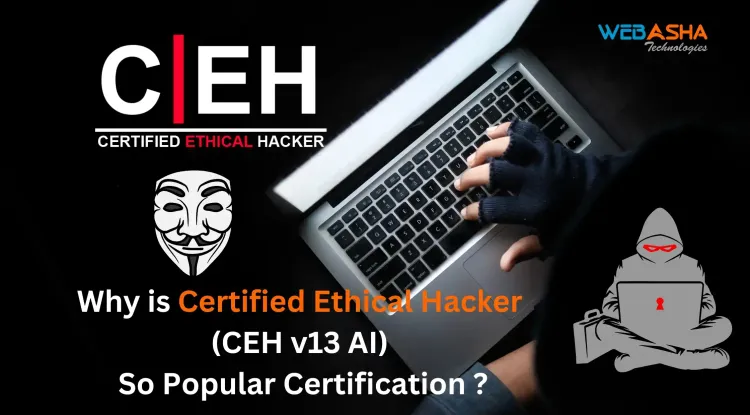How Do Hackers Use BlackEye for Phishing Attacks and How You Can Protect Yourself?
Phishing attacks are one of the most prevalent and effective methods used by cybercriminals to steal sensitive information. BlackEye, an advanced phishing tool, has gained popularity among attackers for its ability to create convincing fake login pages of well-known websites. This blog explores how hackers use BlackEye for phishing attacks, detailing the process from creating fake login pages to collecting stolen credentials and exploiting the victim’s personal information. The blog also provides practical tips on how individuals can protect themselves from falling victim to such attacks by being vigilant, verifying URLs, using multi-factor authentication, and educating others on the risks of phishing.

Phishing is one of the most common and dangerous forms of cyberattack, where attackers trick victims into revealing sensitive information, such as usernames, passwords, or financial details. Hackers often use advanced tools to facilitate these attacks, and one such tool is BlackEye. BlackEye is a popular phishing toolkit that allows attackers to create fake login pages for a variety of services and websites, making it easier to deceive victims into submitting their personal data.
In this blog, we’ll explore how hackers use BlackEye for phishing attacks, the techniques involved, and how individuals and organizations can protect themselves from such attacks.
What Is BlackEye?
Before we dive into how hackers use BlackEye for phishing attacks, let’s first understand what BlackEye is. BlackEye is an open-source phishing tool that simplifies the process of creating fake login pages. These pages resemble the login screens of popular websites, such as Facebook, Instagram, Google, Twitter, and other platforms that users interact with regularly.
Hackers can use BlackEye to send phishing links that redirect users to these fake login pages. When a victim enters their login credentials, such as a username and password, the details are sent to the attacker, who can then use the stolen information for malicious purposes.
How Do Hackers Use BlackEye for Phishing Attacks?
1. Creating Fake Login Pages
The primary feature of BlackEye is its ability to generate fake login pages for numerous online services. Once an attacker has access to the tool, they can select from a list of popular websites, and BlackEye will create an exact replica of the login page. These pages are designed to look identical to the real login pages, which increases the likelihood that victims will trust them.
For example, an attacker may create a phishing page that looks like the Facebook login page. The attacker can then craft a fake message, such as a security alert or a “password reset” notification, to encourage the victim to click on a link that leads to the fake page.
2. Sending Phishing Links
After creating the fake login page, the next step is to distribute the phishing link to potential victims. Hackers use several methods to send these links, including:
- Email phishing: Hackers send a carefully crafted email that includes a link to the fake login page. The email may look like it’s coming from a trusted source, such as a service provider or financial institution.
- SMS phishing (Smishing): In this case, hackers send a text message with a link to the phishing page, often disguised as a legitimate notification or warning.
- Social media and messaging platforms: Hackers may also use social media or messaging platforms to share the phishing link, posing as a friend or a company representative.
These links are often disguised to make them look legitimate, and they may include elements like personalized messages or threats to encourage users to act quickly (e.g., “Your account will be locked unless you reset your password”).
3. Collecting Stolen Credentials
Once a victim clicks on the phishing link, they are taken to the fake login page created by BlackEye. The page prompts them to enter their username, password, and sometimes additional information, such as credit card details or answers to security questions.
When the victim enters their credentials, the information is captured by the phishing page and sent directly to the attacker. The attacker can then use the stolen credentials to access the victim’s account, steal money, or exploit personal data for malicious purposes.
4. Hiding the Phishing Page
To ensure that victims don’t become suspicious of the phishing attempt, BlackEye provides tools to hide the fake login page and make it appear more convincing. The tool can mask the URL, making it look like the real website address. For example, the attacker can use a URL shortener or a web proxy to disguise the link and make it appear more legitimate.
Additionally, BlackEye phishing pages are hosted on web servers or services that may not be immediately flagged by security filters, making it harder for security systems to detect the malicious nature of the page.
5. Exploiting the Stolen Information
After collecting login credentials from victims, hackers can use the information for various malicious purposes, including:
- Account hijacking: Attackers can take over the victim’s accounts on social media, email, or financial platforms, and use them for fraud, extortion, or identity theft.
- Financial theft: If the victim’s account includes sensitive financial information (like credit card numbers), attackers may use it for fraudulent transactions.
- Identity theft: Hackers may gather personal details from a victim’s accounts to impersonate them, apply for loans, or engage in other criminal activities.
- Data breaches: In some cases, attackers may use the stolen login information to gain access to larger systems or databases, causing significant data breaches.
Why Do Hackers Use BlackEye for Phishing?
1. Simplicity and Automation
One of the key reasons hackers use BlackEye for phishing attacks is because it simplifies the process of creating phishing pages. The tool automates much of the process, making it easier for even low-skilled attackers to set up a phishing campaign. With a wide range of popular websites to choose from, attackers can quickly generate fake login pages and launch their phishing attacks with minimal effort.
2. Anonymity and Speed
BlackEye enables attackers to launch phishing attacks quickly and anonymously. Since the tool can be used from any system with internet access, hackers can carry out large-scale phishing campaigns without revealing their identity or location. Additionally, BlackEye allows for rapid deployment of phishing pages, which increases the effectiveness of these attacks.
3. Customizability
BlackEye allows attackers to customize the phishing pages to make them more convincing. By adjusting the look and feel of the page or adding personalized content, attackers can create more targeted phishing attacks. This makes it easier to deceive victims into thinking the phishing page is legitimate.
4. High Success Rate
Since BlackEye allows for the creation of highly realistic phishing pages, the success rate of these attacks can be quite high. Victims are more likely to trust these fake pages because they resemble the real login pages of the websites they use daily.
How to Protect Yourself from BlackEye Phishing Attacks?
1. Be Cautious of Suspicious Links
Always be wary of clicking on links in emails, text messages, or social media posts, especially if they claim to be urgent or require immediate action. Always check the URL before entering any personal information.
2. Verify Website URLs
Ensure that the website you’re visiting is legitimate by checking the URL. Genuine websites use HTTPS encryption, which can be verified by looking for a padlock icon next to the URL in the browser’s address bar.
3. Use Multi-Factor Authentication (MFA)
Enable multi-factor authentication wherever possible. MFA adds an extra layer of security, requiring you to verify your identity using a second method, such as a text message or authentication app, even if your credentials are compromised.
4. Use Anti-Phishing Software
Install anti-phishing software or browser extensions to detect and block phishing attempts. These tools can warn you if a website is attempting to steal your information.
5. Educate Yourself and Others
Stay informed about phishing attacks and regularly educate others about the risks of phishing. By learning how to recognize phishing attempts, you can avoid falling victim to BlackEye and similar tools.
Conclusion
BlackEye phishing is a potent tool for hackers that allows them to create realistic fake login pages to trick victims into providing sensitive information. Hackers use it to exploit vulnerabilities in human behavior, taking advantage of trust in popular websites to carry out their attacks. While BlackEye can be useful for ethical hackers in controlled, authorized environments, its misuse by cybercriminals is a serious threat.
To protect yourself from BlackEye phishing attacks, it’s essential to stay vigilant, verify URLs, use multi-factor authentication, and educate yourself about the dangers of phishing. By doing so, you can help safeguard your personal information and reduce the risk of falling victim to these types of attacks.
FAQs:
What is BlackEye phishing?
BlackEye phishing refers to a tool used by hackers to create fake login pages that closely mimic the legitimate login screens of popular websites and social media platforms to steal usernames, passwords, and other sensitive information.
How does BlackEye phishing work?
BlackEye works by generating fake login pages for various services. Hackers send phishing links to victims, leading them to these fake pages, where they unknowingly enter their credentials, which are then captured by the attacker.
What types of websites can be mimicked with BlackEye?
BlackEye can replicate login pages for a wide range of popular websites, including Facebook, Google, Instagram, WhatsApp, Twitter, and more.
How do hackers distribute BlackEye phishing links?
Hackers distribute phishing links via email, text messages (SMS), social media, and messaging platforms, often using tactics such as urgency or impersonating trusted entities to trick victims into clicking the link.
Can BlackEye phishing pages look identical to the real ones?
Yes, BlackEye allows attackers to create highly convincing fake login pages that closely resemble the real login pages of popular websites, making it difficult for users to distinguish between the two.
What happens when a victim enters their credentials on a BlackEye phishing page?
When a victim enters their login details on a BlackEye phishing page, the credentials are captured and sent directly to the attacker, who can then use them for malicious purposes, such as account hijacking or identity theft.
How do hackers ensure the phishing pages appear legitimate?
Hackers can mask the URL of the phishing page using tools like URL shorteners or proxies, making the fake page look similar to the real website. Additionally, attackers can customize the design of the phishing page to match the look and feel of the original site.
Why is BlackEye considered dangerous?
BlackEye is dangerous because it makes phishing attacks easier to execute by automating the creation of fake login pages, enabling hackers to quickly deploy phishing campaigns and deceive users into disclosing sensitive information.
What is the main purpose of BlackEye phishing attacks?
The main purpose of BlackEye phishing attacks is to steal login credentials and other personal data, which can be used to compromise accounts, perform fraud, or launch further attacks.
Can BlackEye be used for social engineering attacks?
Yes, BlackEye is often used as part of social engineering attacks, where attackers manipulate victims into providing their credentials by impersonating trusted entities or creating a sense of urgency.
Is it possible to protect myself from BlackEye phishing attacks?
Yes, you can protect yourself by being cautious of suspicious links, verifying website URLs before entering personal information, using multi-factor authentication (MFA), and installing anti-phishing software.
How can I spot a phishing link from BlackEye?
Look for signs such as misspelled URLs, incorrect domain names, and strange email addresses. Also, check if the website uses HTTPS encryption (look for the padlock icon in the browser address bar).
What is multi-factor authentication (MFA)?
Multi-factor authentication (MFA) is an added layer of security that requires you to verify your identity using two or more methods, such as a password and a unique code sent to your phone.
How can I prevent falling victim to BlackEye phishing?
Be cautious when receiving unsolicited emails or messages that contain links or attachments. Always verify the sender and URL before clicking. Use a password manager and enable multi-factor authentication to add an extra layer of protection.
Why are BlackEye phishing attacks effective?
BlackEye phishing attacks are effective because they exploit human psychology. Hackers often use urgency, fear, or authority to encourage victims to act quickly without considering the legitimacy of the link.
Can BlackEye phishing pages be detected by antivirus software?
While some antivirus software can detect malicious websites, many phishing pages, including those created by BlackEye, can evade detection. It’s important to be proactive in identifying phishing attempts and use web browser security features.
Is BlackEye only used for stealing credentials?
While credential theft is the primary goal of BlackEye, attackers can also use stolen personal data for identity theft, financial fraud, or launching further attacks on organizations.
Can BlackEye phishing be used in ethical hacking?
Yes, BlackEye can be used by ethical hackers for penetration testing and vulnerability assessments, but only in authorized, controlled environments where the goal is to test and improve security measures.
How do hackers hide their phishing pages?
Hackers use techniques like URL masking, web proxies, and fake SSL certificates to make the phishing pages harder to detect. These techniques make the fake pages look legitimate, even to security systems.
How do I report a phishing attempt using BlackEye?
If you encounter a phishing attempt using BlackEye or any other tool, report it to the organization being impersonated, your email provider, and any relevant authorities or cybersecurity teams.
Can BlackEye be used to attack organizations?
Yes, hackers can use BlackEye to target employees of organizations, attempting to steal credentials and gain unauthorized access to company systems and sensitive data.
What are the consequences of falling for a BlackEye phishing attack?
The consequences can be severe, including identity theft, financial loss, unauthorized access to personal or work-related accounts, and potential data breaches.
How does BlackEye relate to other phishing techniques?
BlackEye is one of many tools used in phishing attacks. While it automates the creation of fake login pages, traditional phishing methods involve sending malicious links through email or text messages, without the need for advanced tools.
Is it safe to click on a link in an email if I know the sender?
Even if you know the sender, always verify the link before clicking. Attackers often use email spoofing to impersonate trusted individuals or organizations, making it essential to be cautious.
How does BlackEye impact online businesses?
BlackEye phishing attacks can harm businesses by compromising customer accounts, stealing sensitive data, and damaging the organization’s reputation if it is associated with security breaches.
What should I do if I fall for a phishing attack using BlackEye?
If you’ve entered your credentials on a phishing page, immediately change your passwords, report the incident to the service provider, and monitor your accounts for suspicious activity.
How does BlackEye differ from other phishing tools?
BlackEye stands out due to its ease of use and the wide range of websites it can mimic. It automates the creation of phishing pages, making it faster and more efficient than traditional phishing methods.
Can BlackEye phishing attacks be mitigated with artificial intelligence (AI)?
AI-powered cybersecurity solutions can help detect phishing attempts by analyzing patterns and behaviors that indicate malicious activity. However, human vigilance is still crucial in identifying phishing links.
What is the role of social media in BlackEye phishing attacks?
Hackers often use social media to distribute phishing links, posing as friends, celebrities, or official organizations to trick users into clicking and submitting their personal information.
Can BlackEye phishing attacks be prevented entirely?
While it's impossible to completely eliminate the risk of phishing, using a combination of security measures, including web filters, multi-factor authentication, and user education, can significantly reduce the likelihood of falling victim.
What role does employee training play in preventing phishing?
Employee training is essential in preventing phishing attacks. Educating employees about phishing tactics, how to spot malicious emails and links, and the importance of security hygiene can reduce the risk of successful attacks.












![Top 10 Ethical Hackers in the World [2025]](https://www.webasha.com/blog/uploads/images/202408/image_100x75_66c2f983c207b.webp)

![[2025] Top 100+ VAPT Interview Questions and Answers](https://www.webasha.com/blog/uploads/images/image_100x75_6512b1e4b64f7.jpg)









